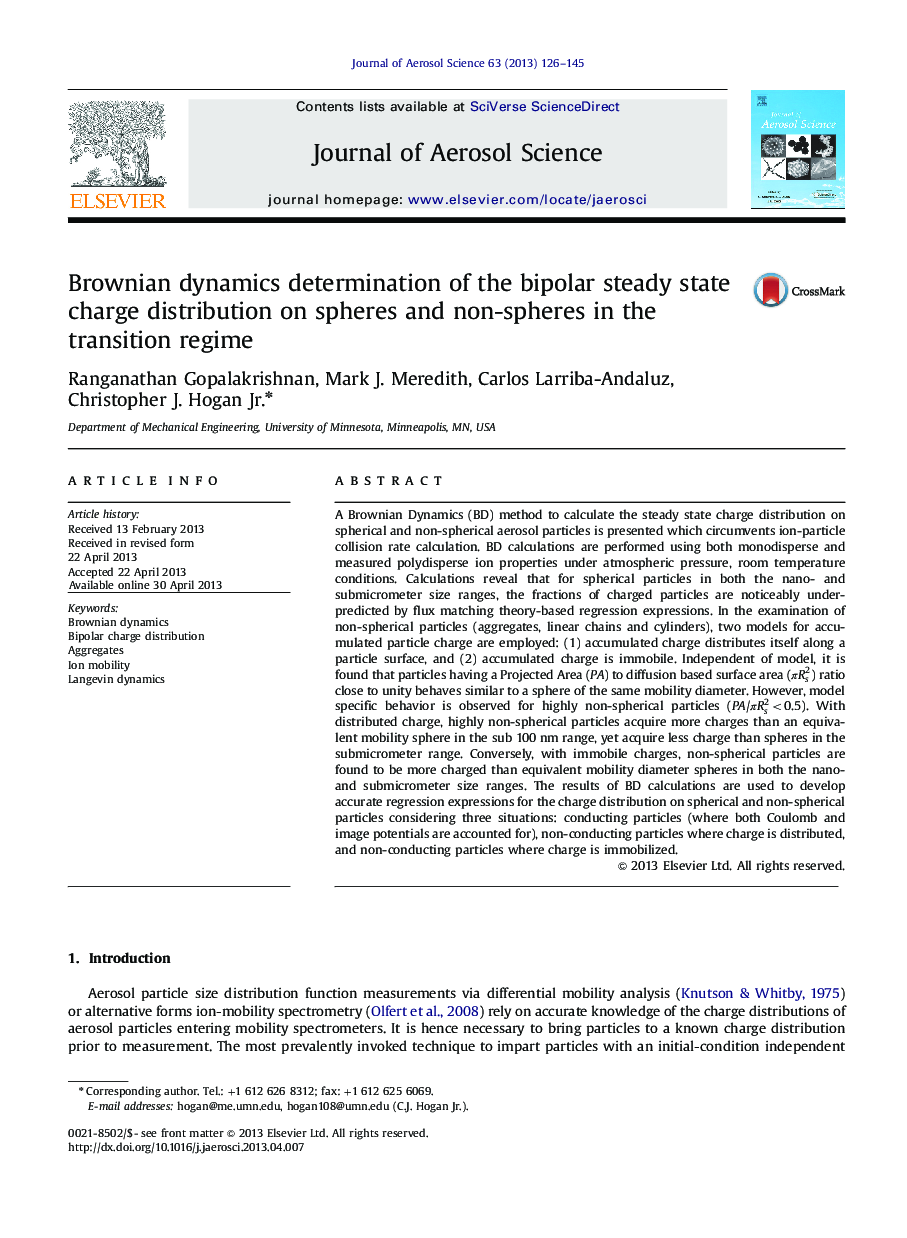| کد مقاله | کد نشریه | سال انتشار | مقاله انگلیسی | نسخه تمام متن |
|---|---|---|---|---|
| 4452437 | 1620760 | 2013 | 20 صفحه PDF | دانلود رایگان |

• The steady state charge distribution on spherical and aspherical particles is calculated.
• Calculations are compared to the regressions expression of Wiedensohler (1988).
• The charge fraction on non-spherical particles is studied as a function of the mobility diameter.
• Both particle morphology and material properties influence the charge distribution.
• Expressions for the charge distributions of spherical and aspherical particles are provided.
A Brownian Dynamics (BD) method to calculate the steady state charge distribution on spherical and non-spherical aerosol particles is presented which circumvents ion-particle collision rate calculation. BD calculations are performed using both monodisperse and measured polydisperse ion properties under atmospheric pressure, room temperature conditions. Calculations reveal that for spherical particles in both the nano- and submicrometer size ranges, the fractions of charged particles are noticeably underpredicted by flux matching theory-based regression expressions. In the examination of non-spherical particles (aggregates, linear chains and cylinders), two models for accumulated particle charge are employed: (1) accumulated charge distributes itself along a particle surface, and (2) accumulated charge is immobile. Independent of model, it is found that particles having a Projected Area (PA ) to diffusion based surface area (πRs2) ratio close to unity behaves similar to a sphere of the same mobility diameter. However, model specific behavior is observed for highly non-spherical particles (PA /πRs2<0.5). With distributed charge, highly non-spherical particles acquire more charges than an equivalent mobility sphere in the sub 100 nm range, yet acquire less charge than spheres in the submicrometer range. Conversely, with immobile charges, non-spherical particles are found to be more charged than equivalent mobility diameter spheres in both the nano- and submicrometer size ranges. The results of BD calculations are used to develop accurate regression expressions for the charge distribution on spherical and non-spherical particles considering three situations: conducting particles (where both Coulomb and image potentials are accounted for), non-conducting particles where charge is distributed, and non-conducting particles where charge is immobilized.
Journal: Journal of Aerosol Science - Volume 63, September 2013, Pages 126–145